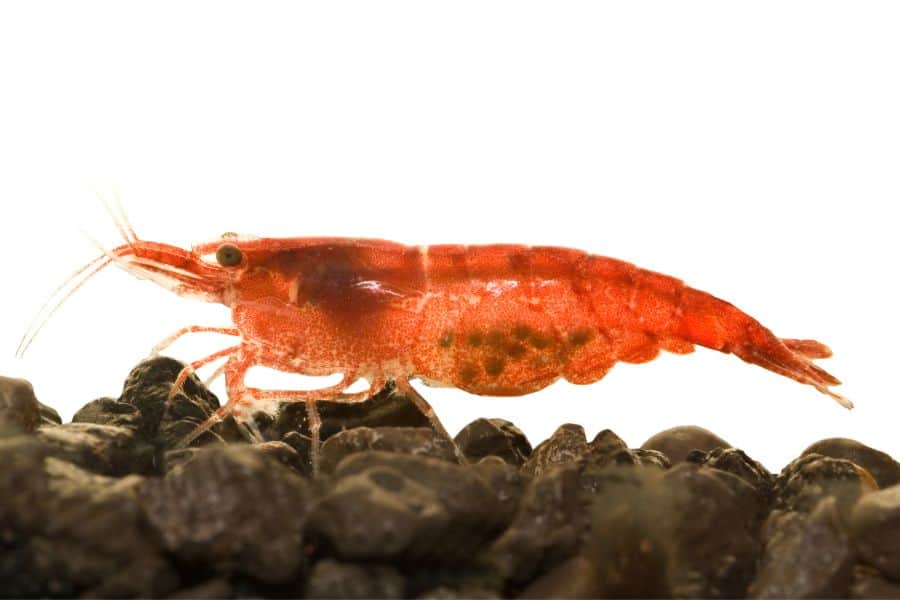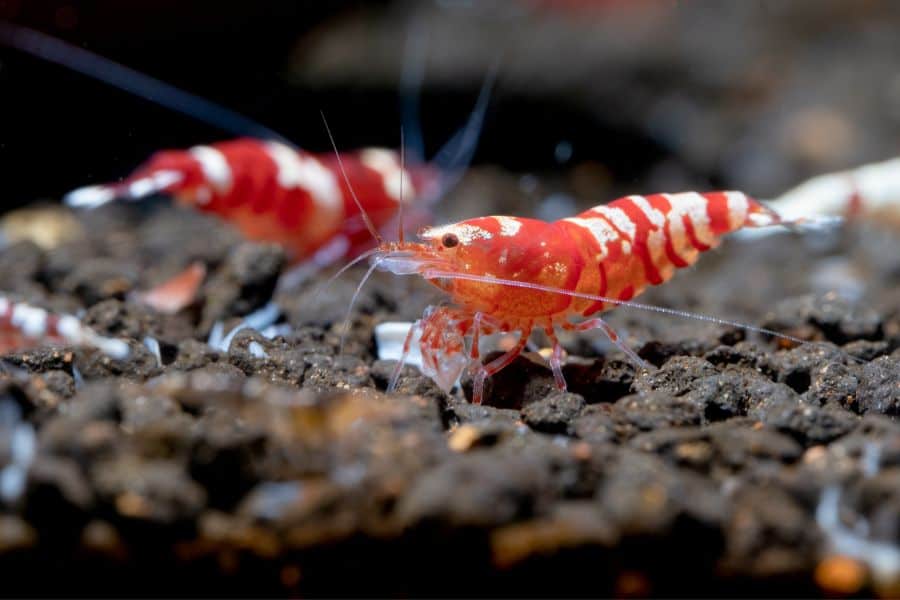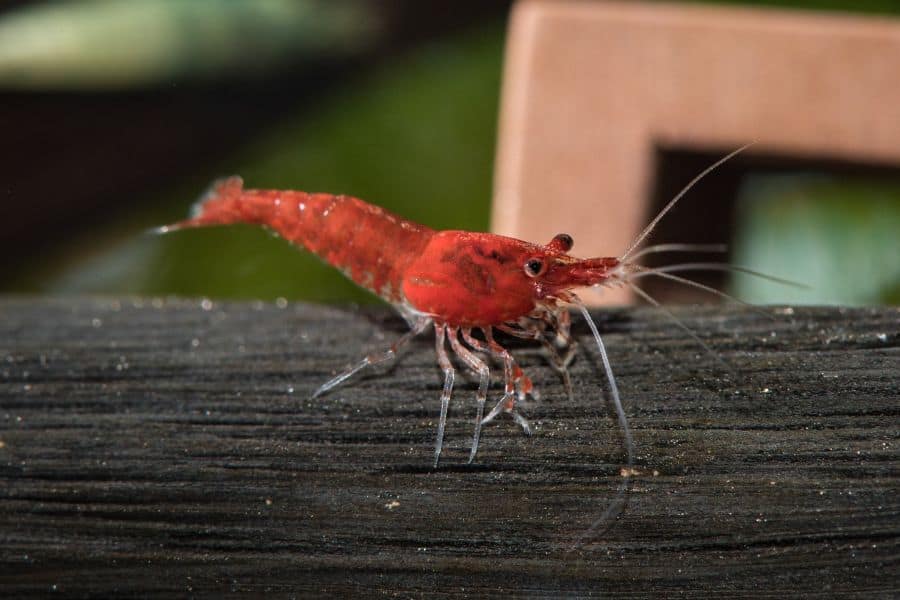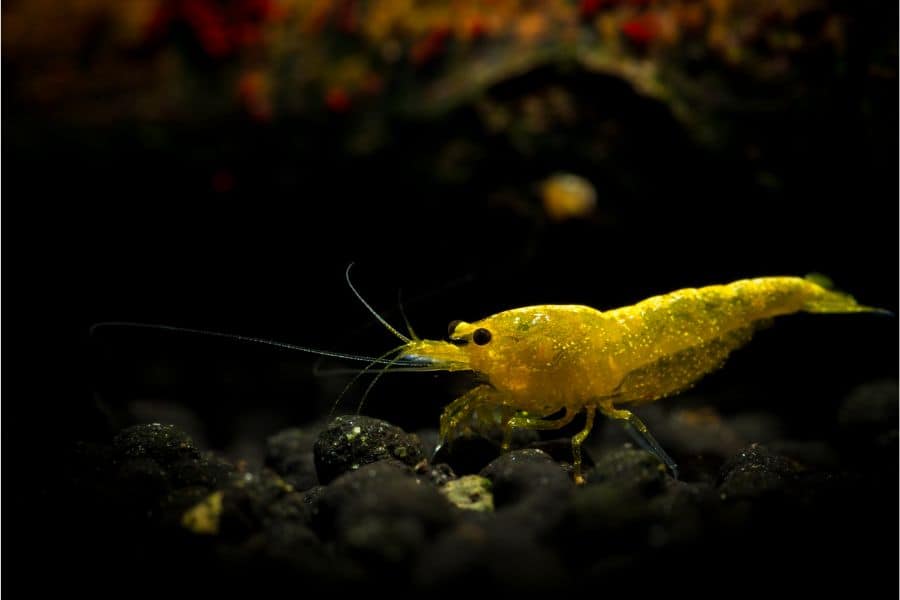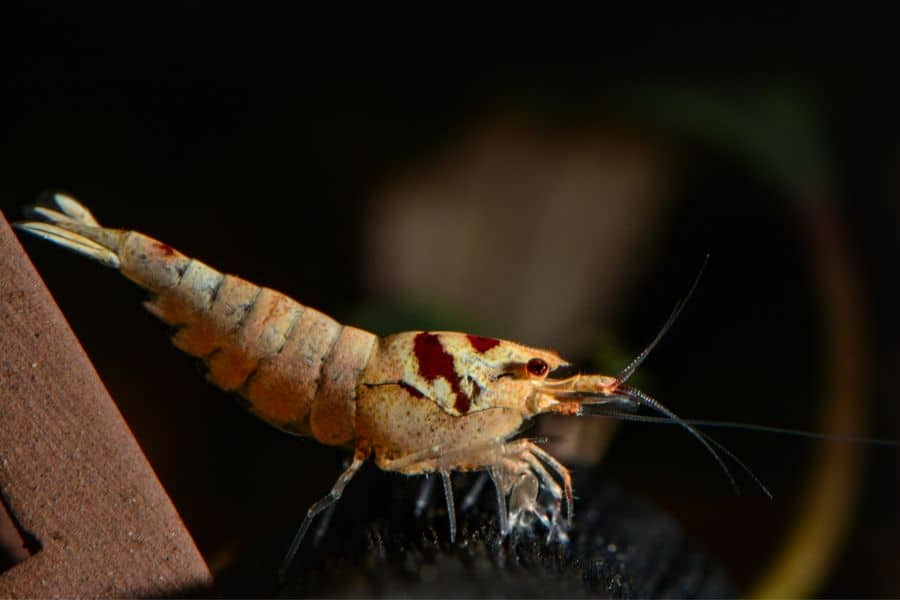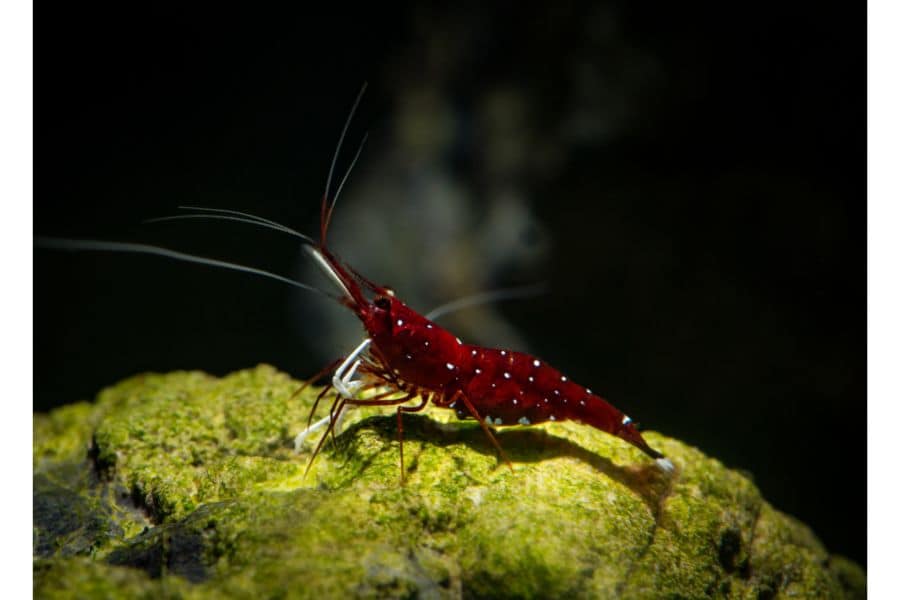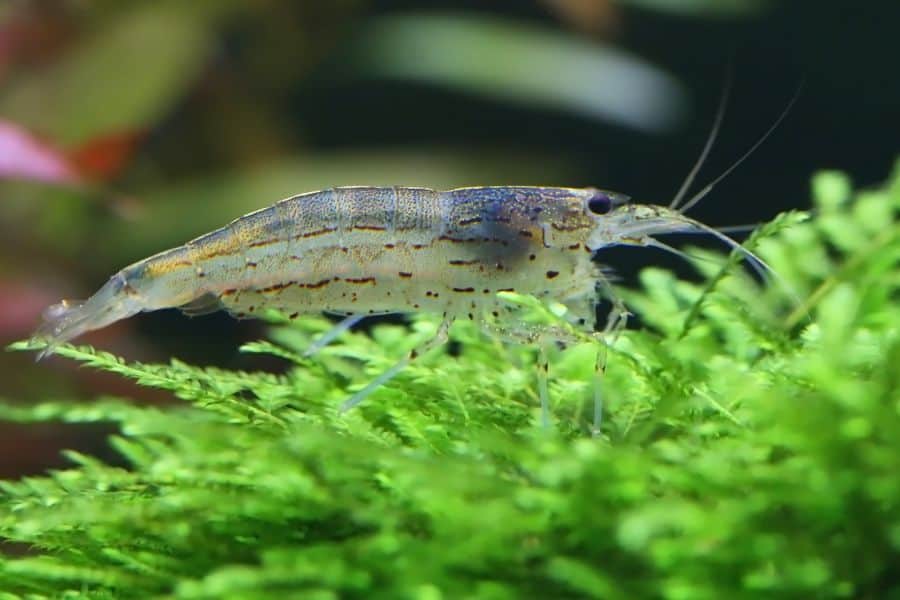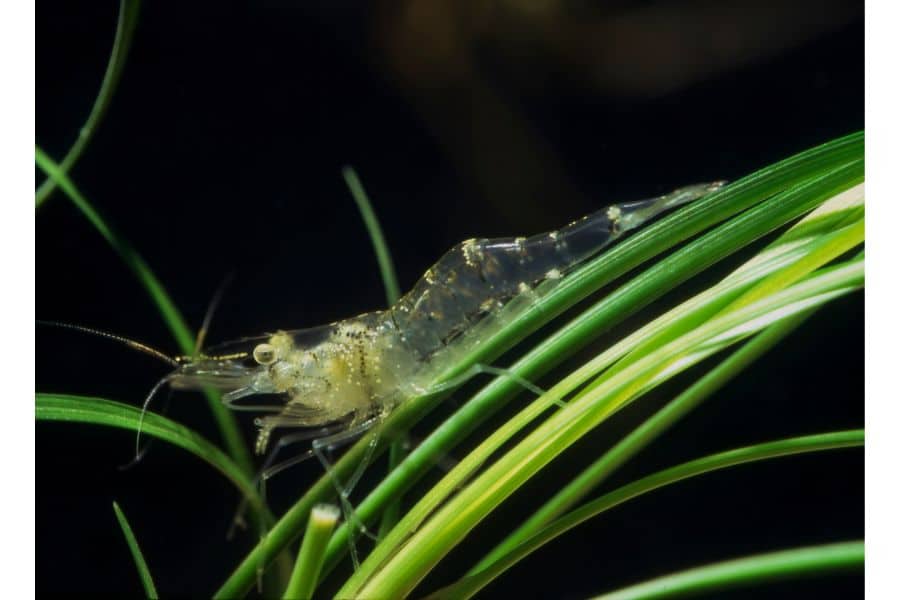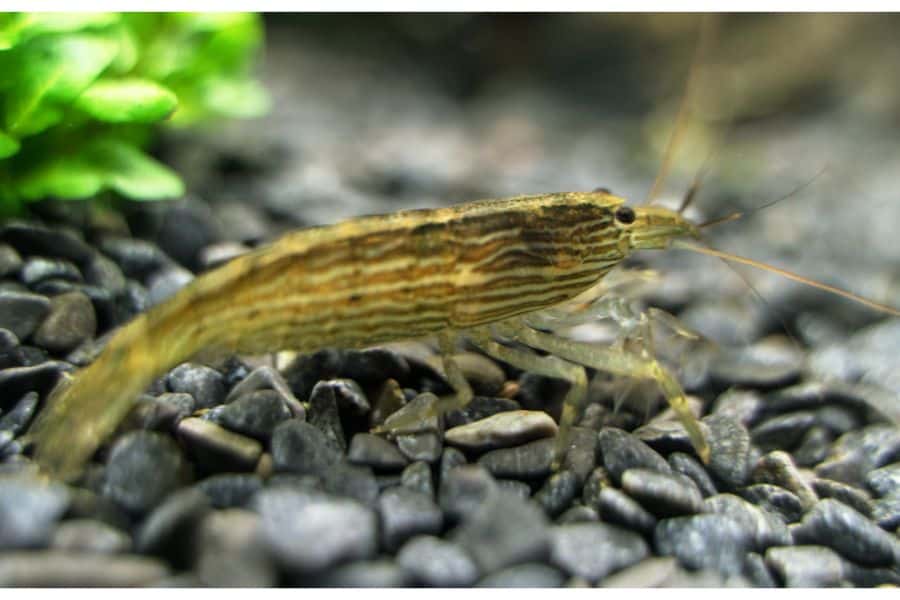When they think of an aquarium, most people probably picture a tank stocked with brightly-colored tropical fish, but the last few years have seen an explosion in the numbers of people keeping dwarf shrimp instead.
They come in a variety of striking colors, they are easy to look after and to breed, and they can provide endless hours of enjoyment and relaxation as you watch them go about their lives – so in this post, we bring you all the information you need about this fun and rewarding hobby.
Overview
In recent years, especially in North America, Europe and Asia – and more recently in Australia – there has been a boom of aquarium enthusiasts keeping dwarf shrimp, either in the same aquaria as their fish or in separate tanks.
Only a few decades ago, shrimp were not particularly fashionable, and not many species were widely known. Furthermore, those that were kept were usually uninteresting, displaying mostly the rather drab colors of wild species.
However, since the 1980s, things have been changing, and in the intervening years, through selective breeding, dwarf shrimp have appeared in an array of spectacular colors and patterns, making them highly desirable additions to aquaria.
Furthermore, many species of shrimp are extremely easy to keep, making them perfect for those with little experience, and for these reasons, it’s no wonder that the popularity of dwarf shrimp continues to grow among aquarium enthusiasts.
What Is the Definition of A Dwarf Shrimp?
When we talk about dwarf shrimp, we immediately run into a problem – since what constitutes a “dwarf shrimp” is not clearly defined.
This is because “dwarf shrimp” is not a scientific name but rather is an umbrella term used mainly in the aquarium trade to denote a whole range of small shrimp that are sold as pets.
Indeed, even the term “shrimp” and the related term “prawn” are non-scientific, and it has been said that anything that looks like a shrimp tends to be called one.
As an extension of this, in the context of the hobby of keeping shrimp, “dwarf shrimp” or “ornamental dwarf shrimp” can be taken to mean any kind of small shrimp deemed suitable for keeping in an aquarium.
In other words, if it’s a small shrimp species and it’s kept in an aquarium, you can call it a dwarf shrimp.
As the popularity of dwarf shrimp continues to grow, aquarium enthusiasts around the world continue to experiment with new species – and sometimes, sellers might not even know the precise species of shrimp they are selling.
However, in practice, only a few species commonly feature in the aquarium trade, and we’ll introduce some of the most popular in more detail later in this post.
Other Naming Complications
As if the confusion over the term “dwarf shrimp” wasn’t enough, things are further complicated by the names given to the various colored shrimp that are available.
When it comes to some of the most common species, the most popular colors – or “morphs” – have been given names that have become widely accepted.
However, with less common species or original morphs, names may be used that are not widely known, and what one person calls a particular morph may be different from what somebody else uses to refer to the same animal.
Very often, creative names are invented within the aquarium trade for marketing purposes – even by individual sellers – and when the names used are not widely known, this just complicates things further.
So in short, if you stick to the best-known species and morphs, you should know exactly what you are getting.
However, be aware that you may also come across other dwarf shrimps that are hard to identify – and that the seller may even be unsure about – so the best advice is simply to find out as much information about a species as you can when you buy it.
Most Popular Types of Dwarf Shrimp
Having discussed why it can sometimes be confusing to try to identify exactly which species a particular shrimp belongs to, now let’s think about some of the most common species that people tend to keep in aquaria.
Neocaridina davidi
One of the most commonly kept dwarf shrimps around the world is the shrimp scientifically known as Neocaridina davidi.
Originally from eastern China and northern Taiwan, this shrimp is incredibly easy to keep, making it ideal for beginners. They breed readily and are available in a range of striking colors.
Common names include red cherry shrimp or just cherry shrimp, which refers to the most popular and famous color.
However, as well as red, they also exist in yellow, blue, green, violet, chocolate, black, white and transparent “ghost” morphs.
A pink morph is commonly referred to as the sakura shrimp, which is not to be confused with another sakura shrimp, Lucensosergia lucens, a type of shrimp that is caught in Japan for food.
Neocaridina davidi are omnivorous and feed primarily on biofilm. They do well when kept with growing plants such as java moss or java fern – they like to sit on the leaves of these plants and will graze on the biofilm found there.
They prefer water with a pH of around 6.5-8 and a temperature of 57-84°F, with around 72°F being optimum.
Adults grow to around 1.5 inches in length, although females are considerably larger than males.
They can be kept in the same aquarium as fish, but many fish will see them as prey – and baby shrimp are especially likely to be taken.
This means a colony can survive if enough young are being born to replace those that are eaten – but if you have particularly expensive high-grade shrimp, you’ll probably want to keep them in an aquarium by themselves.
Note that at various times, this species has also been classified as Neocaridina heteropoda and Neocaridina denticulata sinensis. You will sometimes still see these names used by sellers – but they refer to the same species, namely Neocaridina davidi.
Caridina Shrimp
The Caridina genus of shrimp is particularly well represented in hobbyist aquaria, and several species are commonly kept. Here are some of the most popular.
Bee Shrimp – Caridina cantonensis
Originally from Taiwan, the bee shrimp is another of the most popular dwarf shrimps among aquarium enthusiasts.
These shrimp are more particular when it comes to water conditions. They require pH-neutral or slightly acidic soft water, and the temperature is also important.
They do best at around 68-78°F, and the water temperature affects both the hatching time of eggs and the color of the shrimp produced. At 72°F, the shrimp take around 28 days to hatch – while temperatures of 75-77°F produce shrimp with the most vibrant colors.
Bee shrimp exist in several striking color patterns, and many display bee-like stripes, hence the name. Black and white is the most common, but red and white is also popular, a morph known as the crystal bee.
The crystal bee morph is highly sought after, and a grading system has been developed – the highest-grade crystal bees display solid red sections with well-defined white bodies.
Other morphs include blue shrimp, black shrimp and white shrimp.
The bee shrimp is a good example of how complicated things can become in terms of naming, with breeders giving the various strains they produce strange and evocative names such as princess bee, blue bolt, tangerine tiger and shadow panda.
Cardinal Shrimp – Caridina dennerli
The shrimp commonly referred to as the cardinal shrimp in the aquarium trade is known to science as Caridina dennerli and originates from the Indonesian island of Sulawesi.
In its natural habitat, it is found only in a single lake, Lake Matano in South Sulawesi. The species is considered critically endangered – or possibly even extinct – in the wild but has become a popular species among aquarists due to its attractive appearance.
These shrimp have dark red bodies with white spots and grow to about an inch in length. They prefer water of around 88°F, which is a little warmer than many other species of dwarf shrimp. Water acidity of around pH 8.2 is ideal, and they prefer water that is relatively soft.
In captivity, they breed readily, and as long as you provide them with the correct water conditions, they are easy to care for.
Amano Shrimp – Caridina multidentata
Another easy shrimp to keep and care for is the Amano shrimp, known scientifically as Caridina multidentata.
An omnivorous species, these shrimp are particularly partial to algae, which means they are often added to aquaria containing fish or other animals to keep algae under control.
However, they can’t survive on aquarium algae alone, and you should supplement their diet with algae wafers or spirulina flakes as well as some animal-based protein in the form of pellets, flakes, or frozen or live daphnia, mysis or something similar.
Due to the fact that they are not as aesthetically pleasing as the species we’ve mentioned above, they are less commonly kept alone.
They grow to a maximum of around two inches, making them one of the larger “dwarf” shrimp species. Their bodies are translucent with reddish-brown spots on the sides.
This species is native to Japan and Taiwan, and they do best in temperatures ranging from 64°F to 84°F. Their ideal water pH level is 6.5-7.5.
In the wild, the eggs are released in brackish water where the shrimps spend the larval stage of their life cycle. Since they need the salt content to develop beyond the larval stage, they are very difficult – although not impossible – to breed in captivity.
Other Species
Other than Neocaridina and Caridina species of shrimp, some others sometimes turn up in aquaria and are kept by shrimp enthusiasts, so let’s have a look at those now.
Ghost or Grass Shrimp – Palaemonetes
Palaemonetes is a genus of shrimp that contains many species that are sometimes kept in aquaria, and they are commonly referred to as ghost shrimp or glass shrimp.
As you may guess from the name, these shrimp are mostly transparent, making them an interesting addition to your aquarium.
In the US, perhaps the one you are most likely to find is Palaemonetes paludosus, a species that is native to the southern states east of the Appalachian Mountains. It grows up to about an inch in length, and its peculiar appearance makes it popular among hobbyists.
In general, shrimp belonging to the Palaemonetes genus are hardy animals and don’t take much looking after, feeding themselves on algae or whatever detritus or anything else they can find.
As well as being sold as pets, these shrimp are also commonly used as food for other aquarium animals – and if you keep them in the same tank as bigger fish, they are likely to be eaten.
However, if there are enough of them – and they have enough places to hide – they will breed readily, replenishing their numbers, making this an option if you don’t mind losing a certain proportion of them over time.
Some species of Palaemonetes can reach three or four inches in length, which is pushing the definition of what we can consider a “dwarf” shrimp somewhat.
Related: Can Peaceful Ghost Shrimp Live With Bettas?
Bamboo Shrimp – Atyopsis
Bamboo shrimp belonging to the Atyopsis genus – and particularly the dwarf bamboo shrimp, Atyopsis spinipes – can be kept in aquaria.
The species is widely spread throughout Asia and the Pacific, and for them to do well in captivity, they require a moderate amount of water flow. This is because they feed by filtering particles from flowing water.
These are not particularly easy shrimp to keep, but for more experienced aquarists, they can make a fascinating addition to your collection.
Tips for Keeping Dwarf Shrimp
Here are some useful tips that will help you keep your dwarf shrimp healthy.
Pay Attention to Water Chemistry and Temperature
With dwarf shrimp, you need to pay careful attention to the water chemistry and temperature, so it’s important to find out exactly which species of shrimp you have.
Most dwarf shrimp are happy in water of around 70°F, but this is a generalization, and you’ll need to research the correct temperature for the species you are keeping. For example, cardinal shrimp prefer slightly warmer water.
You should also find out what pH level the shrimp you are keeping prefers as well as the correct hardness of the water.
In short, the more information you have about the preferences of the shrimp species you are keeping, the more comfortable you can make them.
Avoid Copper in The Water
Above all, avoid any traces of copper in the water you keep your shrimp in because it will kill them. This problem can even occur if the water in your aquarium came through copper pipes, so if you notice your shrimp getting sick or dying, this is one of the first things to check.
Special Colors Will “Breed Out” in A Colony
Bear in mind that if you keep lots of expensive colored shrimp in a breeding colony, the colors will eventually “breed out”.
This means if you want to keep breeding shrimp with special colors, you need to breed them selectively rather than just letting them get on with things themselves.
Also Read:
Dwarf Shrimp: FAQs
How Many Dwarf Shrimp per Gallon?
Within reason, there’s no limit to the amount of dwarf shrimp you can keep per gallon as long as they have enough food and places to hide.
Of course, this depends on the particular species you are keeping, but for example, for Neocaridina davidi, an aquarium of at least 10 gallons is the minimum for a colony – but a 50-70-gallon tank would be much better.
What Size Tank Do Dwarf Shrimp Need?
The larger the tank, the better, and if you have a 50–70-gallon tank, that’s about ideal. However, some species can be kept in smaller tanks of only 10 gallons.
What Are the Most Popular Types of Dwarf Shrimp?
Probably the two most popular types of dwarf shrimp are Neocaridina davidi, commonly known as the cherry red shrimp, and Caridina cantonensis, commonly known as the bee shrimp.
What Food Should You Feed Dwarf Shrimp?
Most dwarf shrimp are omnivores and will eat algae, biofilm, blanched vegetables, shrimp flakes and live food. However, don’t leave food to rot in the tank or it will create ammonia, which will damage the health of your animals or even kill them.
That said, you should properly research which food the species of dwarf shrimp you are keeping prefers.
What Kind of Vegetation Is Good to Plant in A Dwarf Shrimp Aquarium?
Most dwarf shrimp like to have live vegetation growing in their aquarium, and good species are things like java moss and java fern. This gives them somewhere to hide, and they can also graze on the biofilm.
Can Dwarf Shrimp Be Kept with Other Dwarf Shrimp Species?
This depends on the species, but if they are about the same size and are non-aggressive species, they can sometimes be kept together.
Be aware, however, that some closely related Caridina species may cross-breed if kept together.
Can Dwarf Shrimp Be Kept with Fish?
Dwarf shrimp may be kept with fish, but if the fish are much bigger than the shrimp, the fish may see the shrimp as food.
Also, if you are trying to breed your shrimp, you should understand that a certain proportion of the baby shrimp will be eaten by fish – so if you don’t want this to happen, you should keep them separate.
Most aquarists who keep more valuable, higher-grade shrimp don’t keep them in the same aquarium as fish, although lower-grade shrimp in a breeding colony can be kept with fish if you are willing to tolerate losing some from each generation.
Are Dwarf Shrimp Suitable for Nano-Aquaria?
Some dwarf shrimp such as Neocaridina davidi are suitable for so-called nano-aquaria. However, this is a more challenging way to keep them and so is best avoided unless you are an experienced aquarist.
For beginners, the best option is to choose an easy species and to keep them in a breeding colony in a large aquarium.
What Are the Ideal Lighting Conditions for Dwarf Shrimp?
Most dwarf shrimp are shy and prefer to have lots of places to hide, which means bright lights may upset them.
To rectify this issue, if you want to light your aquarium, you should place floating plants on the surface to disperse the light.
A Fun and Rewarding Hobby
Keeping dwarf shrimp is a fun and rewarding hobby, which is why it has become so popular. Some species are also particularly easy to keep and require little maintenance, making them a good choice for aquarium novices.
